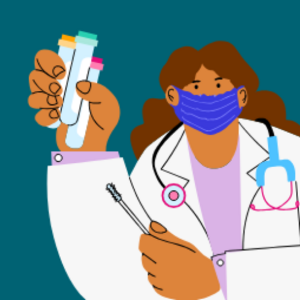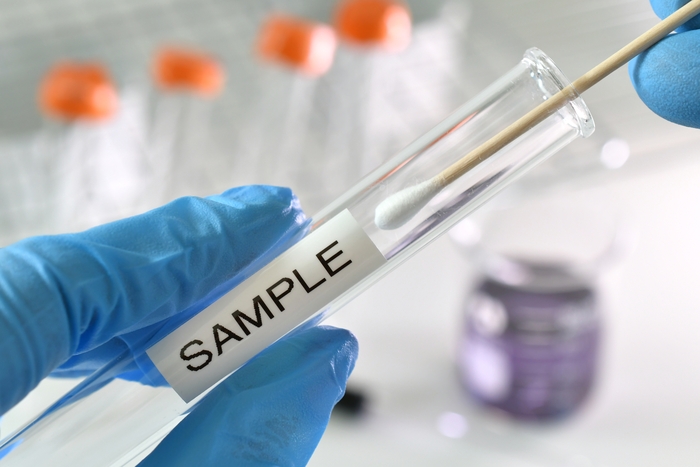
Ensure your health. Get tested today.
Convenient lab testing at your fingertips at more than 5,000 locations nationally. Consult with a doctor, or get tested on your own.

If you’re wondering how long after sex you should wait to get tested for a sexually transmitted disease (STD), you’re not alone. When your goal is to be proactive about your sexual health, it can be hard to find the answers you need. Testing for sexually transmitted infections (STIs) is notoriously complicated, too, because each STI timeline varies according to how your immune system responds to a specific organism.
Follow this primer on STD time and the average window for STD testing for the information you need to stay well and have peace of mind.
About 1 in 5 people in the United States has an STD, according to the CDC. They also note that around half of new STDs are among people between 15 and 24. This underscores the importance of getting tested—especially if you are with a new partner or are not practicing safe sex.
The Mayo Clinic lists the following as risk factors for getting an STD:
Women are also more at risk for STDs than men, according to the CDC. This may be due to the anatomy of the female genitalia, they note. Common STDs include HPV and HSV-2 (the type of herpes virus that causes genital warts).
Many STDs are curable, but sometimes symptoms can go unnoticed for weeks or months. Some people can also have no symptoms at all. Untreated STDs can lead to long-term problems, including infertility, according to the CDC. This is why getting tested is so important. The CDC recommends regular testing if you have risk factors and testing before you engage in sex with a new partner.

Convenient lab testing at your fingertips at more than 5,000 locations nationally. Consult with a doctor, or get tested on your own.
When it comes to STD testing, it’s helpful to start with some definitions. The STD incubation period is defined as the range of time it takes between when you first come into contact with a sexually transmitted organism and when you develop symptoms of an infection. It takes time for a bacteria or virus to multiply within your body to the point that it will be detected on a lab test. Some lab tests check for antibodies (the immune cells that fight off a virus or bacteria), and these also take time to develop. Some STDs have a very short incubation period, meaning that if you have unprotected sex on a Saturday, you may have symptoms by Monday. However, other STDs have a very long incubation period.
According to the CDC, one complicating factor when it comes to STD incubation periods is that not all STDs cause symptoms in every person with an infection. In fact, many people will be unaware that they have an STD because they will have no symptoms at all. This is why it’s important to get an STD test within a certain period of time after having unprotected sex, even if you’re having no symptoms of infection at all.
A window period is the time between exposure to a pathogen (such as an STD), and being able to test positive. In other words, if you test too soon (before your window period ends) you could end up with a false-negative result. The end of your window period is the earliest a test may be positive, according to Medical News Today. They also note that window periods can vary and you may not have symptoms even after a window period ends.
Like many communicable illnesses, every STD has an incubation period. An incubation period is the time it takes for your body to recognize a pathogen and then develop an immune response to it. In simpler terms, an incubation is the timeframe between exposure and when you may develop symptoms. It is important to note that an incubation period is not the same as a window period. Here are the incubation periods for common STDs:
It can be difficult to wait around wondering if you’ve contracted an STD during a sexual encounter. However, by researching your next steps and getting informed about incubation periods and testing windows, you’re already well on your way to getting the care you need. Always contact a physician if you have questions or need care.
To help stay as safe as possible, the CDC recommends that you get tested for STDs after having an unprotected sexual encounter (including oral sex) with a person outside of a monogamous sexual relationship. However, beyond this general principle, there are specific windows of time during which you should get tested for each STD. It’s important to be aware of these time windows because if you get tested before the window begins, you could have a false negative STD test, according to the CDC. This means that you could get a negative result when you actually do have an STI. It can be agonizing to wait—but it’s worth it to get tested during the appropriate time window. Another important thing to keep in mind is that you should refrain from any sexual activity until you are sure you do not have an STI.
Based on data from the CDC, here are some of the most common STDs and when to get tested:
Chlamydia is a bacterial infection that can spread through sexual contact. You can get tested around the two-week mark.
Gonorrhea is a bacterial infection that can spread through sexual contact. You can get tested around the two-week mark as well.
HIV is a viral infection that is spread through contact with the bodily fluids of an infected person. You can get tested two weeks after exposure, but you should also get a follow-up test 3 months after exposure just to be sure.
Syphilis is a bacterial infection that spreads through sexual contact. You can get tested 1 month after exposure, and should also get a follow-up test 3 months after exposure.
Hepatitis B is a viral infection that spreads through contact with the bodily fluids of an infected person. You can get tested 3 to 6 weeks after exposure.
Hepatitis C is also a viral infection but only spreads through contact with blood from an infected person. You can get tested 2 months after exposure and should get a follow-up test after 6 months just to be sure.
Human Papillomavirus (HPV) is a viral infection that is spread by sexual contact with an infected person. You can get tested between a few weeks and a few months after exposure.
Genial herpes (also called genital warts) is a viral infection that is spread by skin-to-skin contact with an infected person. You can get a swab test a few days after exposure, and a blood test a few months after exposure.
Trichomoniasis is a parasitic infection that spreads through sexual contact. You can get tested between 1 week and 1 month after exposure.
It can be difficult to make sense of all this information and to decide when to get tested for each STD. It can also be hard to wait—especially if you’re worried that you may be harboring an STI.
A couple of general rules of thumb from the CDC can help make this process less complicated. First, if you’re having symptoms of an STD—like vaginal or penile discharge, pain with urination, or pelvic pain—don’t wait to get tested. If you have symptoms, it means that your infection is within a detectable range. Additionally, if your sexual partner informs you that they’re positive for an STI, then don’t wait to get treated—get tested right away. Many urgent care clinics offer STD testing. In fact, going to urgent care may be the easiest and fastest way for you to get STD testing.
If you don’t have any symptoms, the CDC recommends waiting about two weeks to get tested for gonorrhea, chlamydia, HIV, Trichomoniasis, and syphilis. If those tests are negative, then a follow-up test a few months later for HIV and syphilis can give you ultimate peace of mind.
Dormant STDs are STDs that live in the body without producing any symptoms, according to Medical News Today. If you have a dormant STD, you can still spread your STD to other people. This is why STD testing is important, even if you don't have any symptoms and don't think you have been exposed. Examples of STDs that can be dormant include HIV, herpes, hepatitis C, chlamydia, syphilis, and HPV.
It depends on the specific STD, but generally, the CDC recommends waiting about two weeks to get tested.
An STD incubation period is the time it takes from when you first come into contact with a sexually transmitted organism and when you develop symptoms of an infection.
Yes, many STDs can be asymptomatic, meaning you may not show any symptoms but still have the infection and be able to transmit it to others.
A window period is the time between exposure to a pathogen and when a test can accurately detect the infection. Testing too soon could lead to a false-negative result.
For example, Chlamydia has an incubation period of 7 to 21 days, Gonorrhea 2 to 24 days, HIV 7 days to many years, and Syphilis 10 to 90 days.